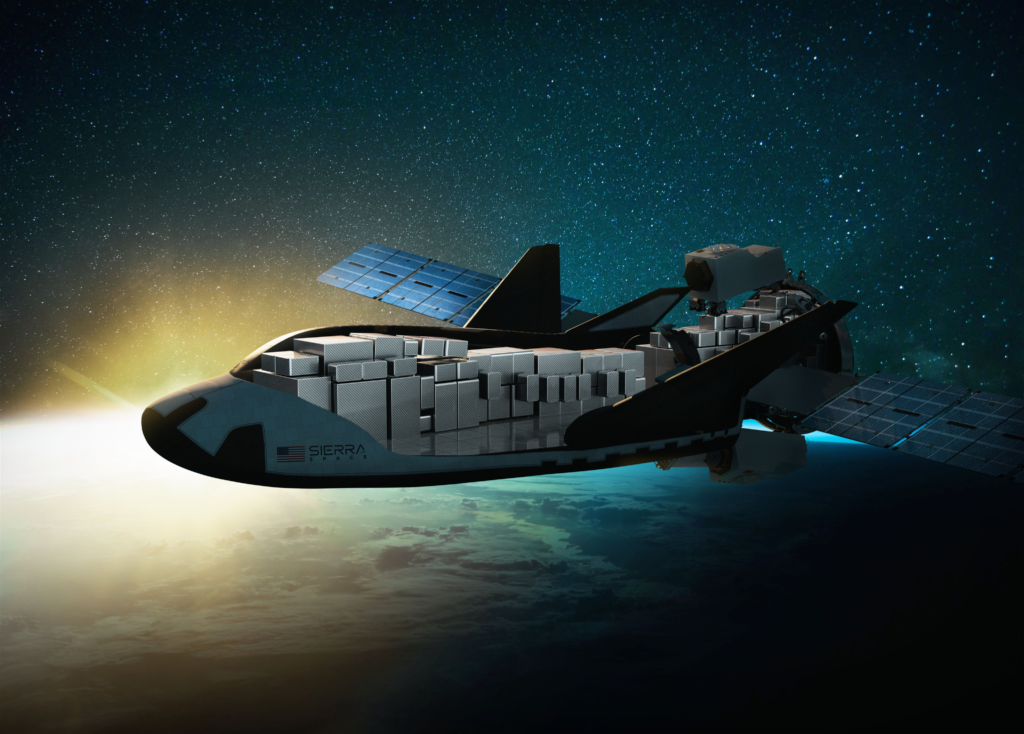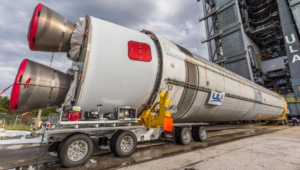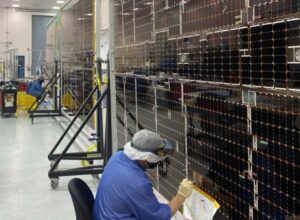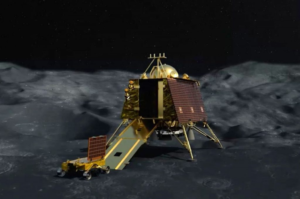
A Closer Look At The Dream Chaser Spaceplane
Dream Chaser is a next generation spacecraft under development by Sierra Space trying to change how we access space. The spaceplane features a modern design and multiple variants depending on the mission at hand. While not nearly as big as the Space Shuttle was, it still offers some unique capabilities and an impressive cargo capacity.
With its first ever mission scheduled to happen in the third quarter of this year, a lot of that technology and design will be put to the test. Here Dream Chaser Tenacity will attempt to launch atop ULA’s Vulcan before docking with the ISS and eventually returning to Earth for a runway landing. This launch will be with the cargo variant of Dream Chaser, however, there also is a crewed and upgraded cargo version as well.
Not to mention the addition of the Shooting Star service module which not only increases payload capacity but also offers extra services. After over a decade of development, manufacturing, and testing, we are closer than ever to an actual launch attempt. Here I will go more in-depth into the three variants of Dream Chaser and their designs, the upcoming mission with Tenacity, and more.
Dream Chaser Variants

Rather than try to make one spacecraft that could do it all, Sierra Space decided to separate Dream Chaser into multiple designs meant to excel at their respective tasks. This eventually led to Dream Chaser 100 or DC100, DC200, and DC300. DC100 is the variant currently being worked on by the company and is about to launch. This standard uncrewed version is meant for missions to LEO and features a payload capacity of 5,500kg (12,000lbs). For the most part, the interior of this spaceplane is barren with a lot of space for cargo.
It’s meant for missions to the ISS or future stations such as Orbital Reef. When docked to the ISS, access between the station and Dream Chaser will involve the crew passing through Shooting Star (which supports a shirt-sleeve environment) and through a hatch that separates Shooting Star from Dream Chaser. Here they will have access to the rest of the spaceplane. Sierra Space’s main focus with this design was reusability, trying to reduce overall cost, and providing quick turnarounds between missions. They believe the ability to liftoff on top of multiple launch vehicles and land at a wide variety of runways makes Dream Chaser a flexible option for reliable transportation.
United Launch Alliance’s Vulcan Centaur is one example of many that will be capable of lifting Dream Chaser into LEO. In the future, we can expect a majority of DC-101 launches to include a payload fairing over the spaceplane. Since there is no crew, an abort capability is not necessary and the fairings won’t get in the way. Once in orbit, the spaceplane will dock with the station, onboard crews will then transfer everything inside. After leaving the space station, the Dream Chaser Cargo System also offers disposal services via the Shooting Star transport vehicle. Once separated from Dream Chaser, Shooting Star burns up safely in Earth’s atmosphere.
You then have DC-200, the crewed variant of Dream Chaser. Dream Chaser was originally designed as a crewed spaceplane, in part under NASA’s Commercial Crew Program, capable of carrying up to seven astronauts to and from the space station and other low Earth orbit (LEO) destinations. Originally, the crewed variant looked almost identical to the uncrewed with the addition of windows and life support systems. This was the case until earlier this year when Sierra Space hinted at this spacecraft’s new design. The image they provided showed a render of DC-201. Some of the obvious differences included no windows despite it being crewed, a different body with fixed wings, and a significant propulsion system on the back.
Unlike the uncrewed variant, the crewed will always launch with no fairings and the addition of main engines will be very important for an abort capability. This process would ignite these engines during a launch if something goes wrong and try to distance the crew and spacecraft from the rocket as much as possible. Similar to the DC100 option, the crewed design is meant only for LEO destinations.
Finally, you have DC-300. DC-300 is an upgraded uncrewed Dream Chaser design with more capabilities. In a past mock up, Sierra Space shows the spacecraft with solar panels and various technology to extend its options. They also said it would be capable of missions not only to LEO but also MEO and GTO. As far as when we can expect to see the different spaceplanes, it will be a few years. Currently, DC-101 and DC-102 are both under construction. A more realistic timeframe for the other two variants would be around 2026 as a lot of work is still needed with the standard version first.
Tenacity’s Mission

Now that we know more about the different Dream Chaser variants and what they look like, we can take a closer look at Dream Chaser Tenacity and its upcoming launch. Tenacity is the first test article headed to space to dock with the ISS thanks to the CRS-2 contract with NASA. The demonstration mission is planned for launch this Summer on the second flight of the ULA Vulcan Centaur rocket. After launching, Dream Chaser will work to get into positon and eventually rendezvous with the ISS. Once docked, it will stay there for a few months for a total mission duration of 82 days. At the end of mission, the Shooting Star will destructively reenter the atmosphere and the Dream Chaser will land at the Kennedy Space Center’s Shuttle Landing Facility.
For months now we have watched the progression of this spacecraft and by now its practically complete. One of the biggest steps that should be finished was the installation of each individual heat shield tile. Its thermal protection system (TPS) is made up of silica-based tiles (for most of the belly and upper portion of the heat shield), and a new composite material called Toughened Unipiece Fibrous Reusable Oxidation Resistant Ceramic (TUFROC) to cover the nose and leading edges. Sierra Space highlights that this material and process is much more refined than the Space Shuttles and hopes to avoid any issues that technology experienced.
Right now, Tenacity is nearing completion and will subsequently ship to NASA’s Neil A. Armstrong Test Facility in Cleveland, Ohio, for final space environmental testing ahead of its first mission. Under NASA’s Commercial Resupply Services 2 (CRS-2) contract, Dream Chaser will provide a minimum of seven cargo service missions to and from the space station. To meet CRS-2 guidelines, the cargo Dream Chaser will have folding wings and fit within a 5 m diameter payload fairing. The ability to fit into a payload fairing allows the cargo version to launch on any sufficiently capable vehicle, such as Ariane 5 as well as Atlas V.
This first mission will use Shooting Star which is extremely important to Dream Chaser operations. Specifically, back in 2019, it was announced that an expendable Shooting Star cargo module would be part of the Dream Chaser cargo system for CRS-2 flights. The module is a 15-foot (4.6 m) long attachment to Dream Chaser that will allow the spacecraft to carry an additional 10,000 pounds (4,500 kg) of pressurized and unpressurized cargo to ISS. In addition to carrying cargo, the Shooting Star module includes solar panels that supply up to 6 kW of electrical power. It also supplies active and passive thermal management; provides Dream Chaser translation & rotation capability via six mounted thrusters; and supports berthing or docking (in different configurations) to the ISS. Sierra Nevada says the module is capable of additional types of missions in LEO or to cis-lunar destinations; they have developed a free-flying variant with additional capabilities
The Dream Chaser spaceplane is a multi-mission vehicle capable of supporting a variety of LEO needs. It can be customized for both domestic and international customers via vehicle configuration, launch site, destination, landing site, duration, and a host of other variables. The ability to land at different sites around the world is very beneficial, however the company needs access. Sierra Space has entered into agreements with multiple international space agencies. Together they are developing technologies, applications, and missions for Dream Chaser-based space systems.
In terms of this upcoming third quarter launch, some delays could very well happen. Vulcan’s first launch is scheduled to happen on May 4th. This is quite a bit behind the original date for this maiden flight. The company would need a very fast turnaround time for the second Vulcan launch to take place just months after the first. The other important factor is the results of Vulcan’s initial flight. Obviously any problems would have a direct effect on Dream Chaser and when it could lift off. In Dream Chaser’s case, the spaceplane is cutting it close. It seems that Sierra Space is working as fast as possible but there is a lot of work in preparation for this mission. Its possible that Dream Chaser Tenacity needs some extra time for final testing before the mission. This is also assuming that the tests provide perfect reulsts and Tenacity can move on right away. Something we will have to keep an eye on in the coming months.
Conclusion
Sierra Space is trying to change how we access space. The Dream Chaser spaceplane will have multiple variants all focusing on unique sectors within the industry. With the first launch of Tenacity only months away, we will get to see first hand what the spaceplane is capable of. We will have to wait and see how it progresses and the impact it has on the space industry.



